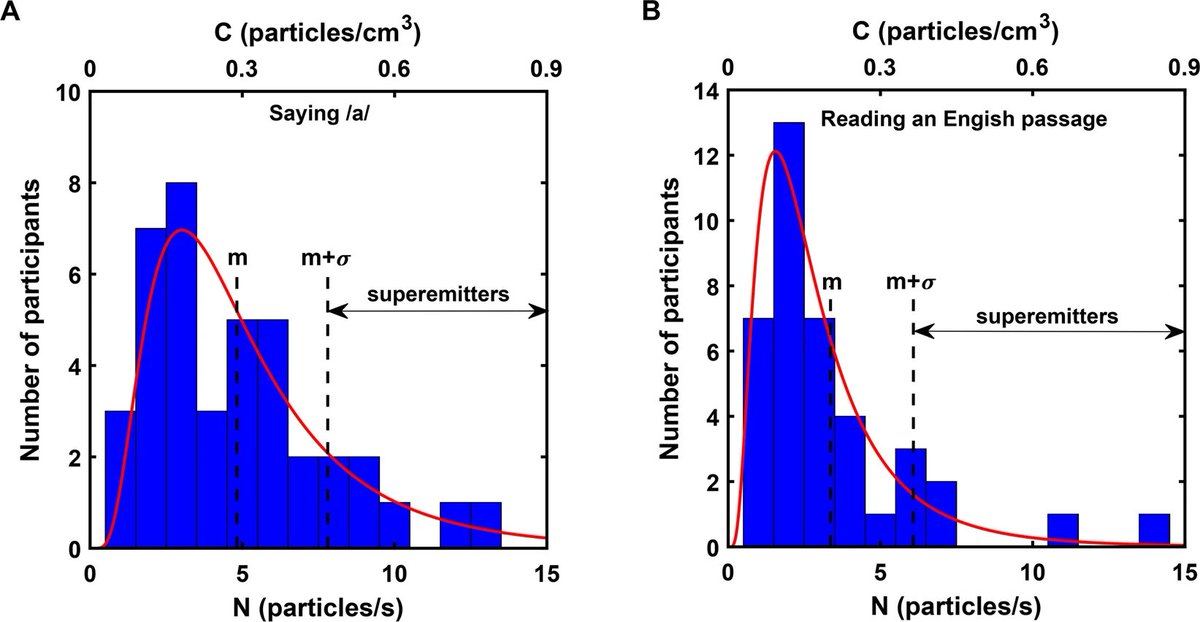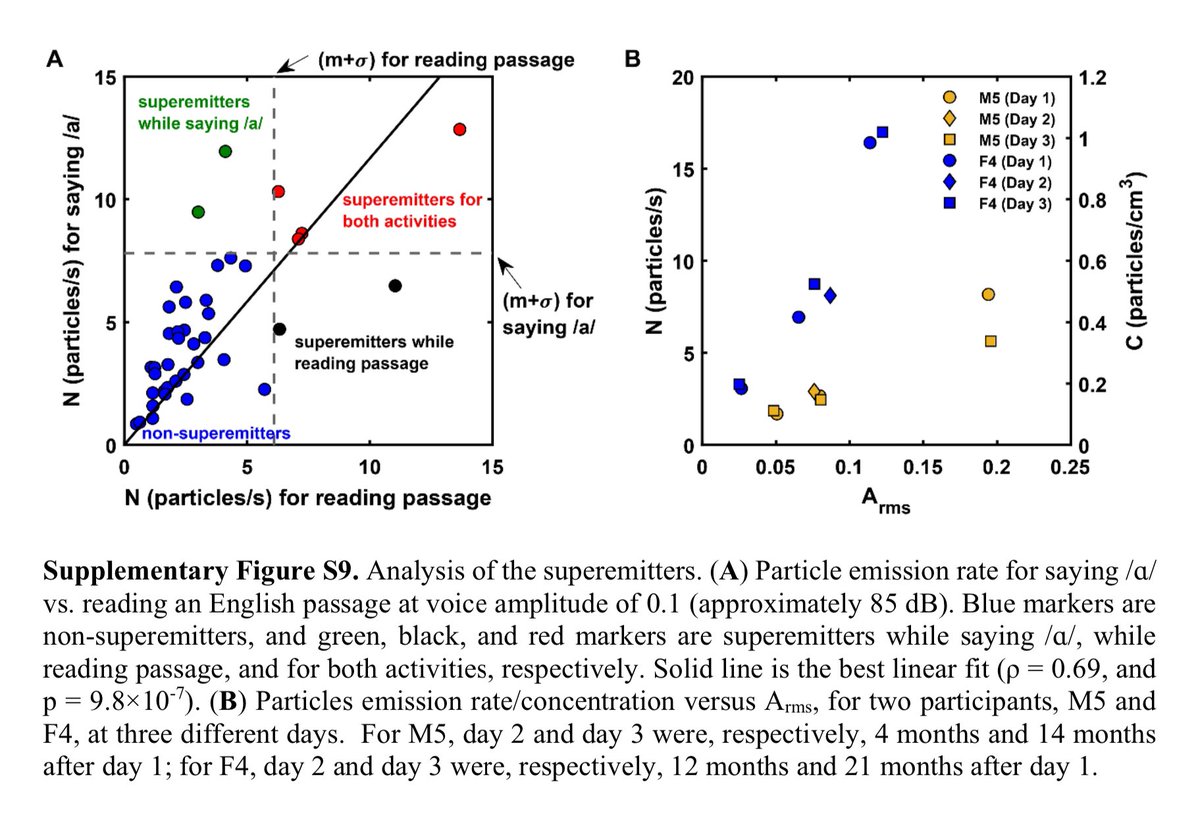
(1/6) Why does superspreading occur?
There are likely many reasons, but one intriguing possibility is some people might be biologically predisposed to release more aerosols when they speak.
This study shows that some people are “speech superemitters.”
nature.com/articles/s4159…
There are likely many reasons, but one intriguing possibility is some people might be biologically predisposed to release more aerosols when they speak.
This study shows that some people are “speech superemitters.”
nature.com/articles/s4159…
(2/6) First, in this study researchers showed that for everyone, the amount of particles that are released increase with the loudness of speech.
This is why activities such as singing pose a particularly high risk for transmission of #SARSCoV2.
This is why activities such as singing pose a particularly high risk for transmission of #SARSCoV2.

(3/6) Researchers then measured the amount of particles released per second when participants pronounced the vowel “A”, and when they read aloud in English.
Participants released between 1 and 14 particles per second. The average number was 4.
Participants released between 1 and 14 particles per second. The average number was 4.
(4/6) But a small proportion of participants released much more.
In the reading exercise 12.5% of people emitted 40% of the total number of particles.
In the reading exercise 12.5% of people emitted 40% of the total number of particles.

(5/6) The experiment was repeated with two participants (a superemitter and a non-superemitter) several months later.
They amount of particles they released was essentially unchanged, showing that the effect was consistent over time.
They amount of particles they released was essentially unchanged, showing that the effect was consistent over time.

(6/6) This suggests that some people consistently release an order of magnitude more aerosols than the rest of the population.
Along with environmental and other factors, this may be a reason why some people transmit the virus to many people, and others to few (or to no one).
Along with environmental and other factors, this may be a reason why some people transmit the virus to many people, and others to few (or to no one).
• • •
Missing some Tweet in this thread? You can try to
force a refresh









